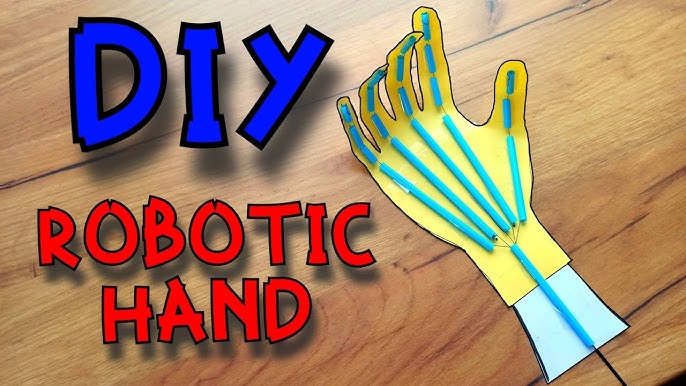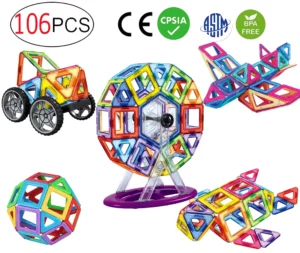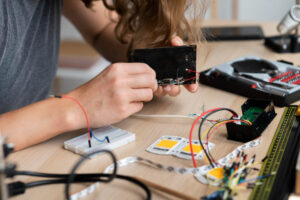The world of technology is evolving faster than ever, but you don’t need a degree in engineering to join the revolution. DIY tech, short for “Do-It-Yourself technology,” is a growing movement where hobbyists, students, and even professionals create, modify, or repair tech gadgets at home. From building your own smart home systems to fixing an old laptop, DIY tech puts control back in your hands.
Whether you’re passionate about tinkering, want to save money, or just love learning new skills, this guide introduces you to the fundamentals of DIY tech. It’s structured to align with Google AdSense policies and follows Google’s E-A-T (Expertise, Authoritativeness, Trustworthiness) principles, offering a clean, original, and informative read for anyone curious about getting hands-on with technology.
What is DIY Tech?
DIY tech encompasses a broad range of projects where individuals take a self-directed approach to creating, repairing, or customizing technology. This can include:
- Building your own PC
- Setting up home automation with Raspberry Pi
- Repairing smartphones
- Designing 3D-printed accessories
- Installing custom firmware on routers
Instead of buying off-the-shelf solutions or paying for expensive services, DIY tech encourages learning, problem-solving, and innovation.
Why DIY Tech is Gaining Popularity
The rise of the internet, open-source platforms, and affordable electronics has made DIY tech more accessible than ever. According to a 2023 survey by Statista, nearly 32% of U.S. consumers attempted a tech-related DIY project in the last year.
Benefits of DIY Tech:
- Cost Savings: Repairing or building something yourself is often cheaper than hiring a professional.
- Skill Building: You gain valuable technical and critical thinking skills.
- Customization: DIY allows you to tailor gadgets exactly to your needs.
- Sustainability: Fixing devices reduces electronic waste.
Popular DIY Tech Projects for Beginners
If you’re new to DIY tech, here are some great projects to start with:
1. Build Your Own Desktop Computer
Assembling a PC is one of the most rewarding tech DIY experiences. You’ll learn how to choose compatible parts (CPU, GPU, RAM), install operating systems, and troubleshoot hardware.
2. Raspberry Pi Projects
A Raspberry Pi is a small, low-cost computer that can power hundreds of DIY ideas—from media centers to home automation hubs.
Examples:
- Create a home surveillance system
- Build a retro gaming console
- Set up a personal web server
3. Smart Home Automation
You can automate lights, thermostats, and security systems using platforms like Home Assistant or OpenHAB, often powered by Raspberry Pi or Arduino.
4. Fix Your Smartphone or Tablet
Websites like iFixit provide guides to replace screens, batteries, or even logic boards, helping you avoid costly replacements.
Comparison Chart: DIY vs. Pre-Built Tech Solutions
| Feature | DIY Tech Project | Pre-Built Product |
|---|---|---|
| Cost | Lower (if parts sourced smartly) | Higher initial cost |
| Customization | High | Limited |
| Skill Requirement | Moderate to High | Low |
| Learning Opportunity | Excellent | Minimal |
| Maintenance/Repair | Easier (you know the system) | Often requires professional help |
Source: Data synthesized from consumer DIY surveys and tech repair guides (2023)
Safety Tips and Best Practices
DIY tech is exciting, but safety is crucial. Here are some best practices:
- Always unplug devices before disassembly
- Use anti-static wrist straps to avoid damaging components
- Follow step-by-step tutorials from trusted sources
- Keep your work area clean and well-lit
- Avoid working on high-voltage electronics unless you are trained
Trusted Tools and Platforms for DIY Enthusiasts
- GitHub: For open-source software and collaborative tech projects
- Arduino.cc: Learn how to build circuits and sensors
- Thingiverse: Explore and share 3D printing designs
- Instructables: A vast collection of step-by-step DIY tutorials
- Reddit (r/DIY, r/techsupport): Community forums for troubleshooting
FAQ: Common Questions About DIY Tech
1. Do I need programming skills to start DIY tech?
Not always. Many beginner projects involve little or no coding. However, learning basic scripting (like Python or JavaScript) can expand your options.
2. Is DIY tech more affordable than buying ready-made products?
In many cases, yes. Building or fixing devices often costs less than buying new. However, costs can vary depending on tools, parts, and complexity.
3. What’s the easiest DIY tech project for a beginner?
Replacing a laptop battery or upgrading RAM is a simple entry point. Raspberry Pi starter kits are also great for first-timers.
4. Is it legal to repair my own electronics?
Yes, in most regions. The Right to Repair movement is gaining traction globally, advocating for consumer access to repair tools and manuals.
5. Can I damage my device while attempting a DIY fix?
Yes, if you’re not careful. Always follow trusted guides and work on non-critical devices when starting out.
Conclusion
DIY tech is more than just a hobby—it’s a gateway to empowerment, creativity, and sustainable living. Whether you’re building a smart home, repairing your phone, or coding your own automation system, the satisfaction that comes from solving problems with your own hands is unmatched.
With the right tools, mindset, and a bit of patience, anyone can get started in DIY tech. It’s an accessible, enriching way to connect with technology on a deeper level while saving money and reducing waste.
Always remember to work safely, double-check sources, and don’t be afraid to make mistakes—they’re part of the learning process. As the tech landscape continues to evolve, DIY enthusiasts will be at the forefront of innovation and sustainability.




